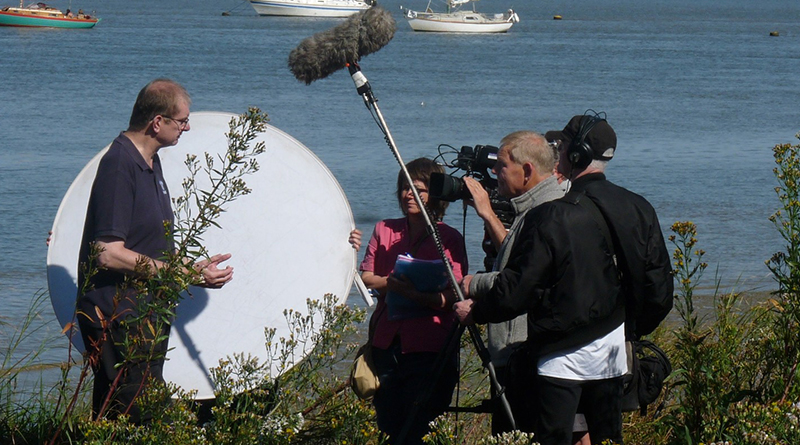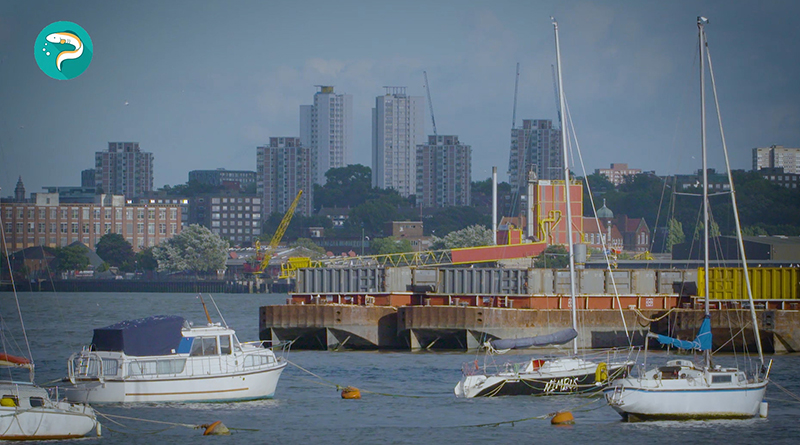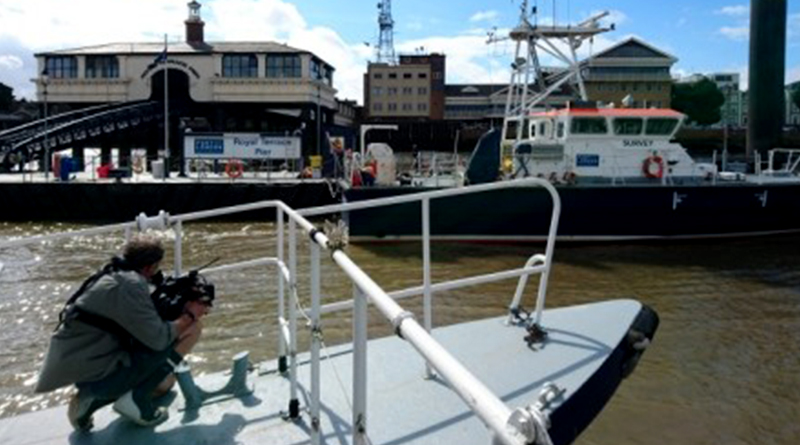THE LIVING THAMES BY DOROTHY LEIPER

Directed by Dorothy Leiper/ Reviewed by Aindrila Chatterjee
“The Earth has its music for those who will listen.” – George Santanaya
Mother Earth is the variety at its best. The mountains, the water bodies, the animals, the greenery etc. shows their best through their different forms in different regions. One such best from Nature is the River Thames. The River Thames, alternatively known as the Isis (in some parts of the journey), is a river that flows through southern England including London. At 215 miles, it is the longest river entirely in England and the second-longest in the United Kingdom, after the River Severn.
 The historic and the official source of the river Thames is Thames Head which is 107 metres (356 feet) above sea level. And the Thames Estuary is a place the River Thames meets the waters of the North Sea, in the south-east of Great Britain. The river Thames which is full of contrast and contradictions is the lifeline of many areas of the London. So, come and enjoy the river!
“The Living Thames” is an odyssey along the river as it meanders through London and flows out to sea, exploring its ever-changing ecology. Chris Baines, the President of Thames Estuary Partnership started his journey to explore river Thames from Teddington, right from the tidal zone of the Thames towards the Atlantic Ocean. His first stop is at Richmond where the stretch of the Thames became broadened to the landscapes.
The historic and the official source of the river Thames is Thames Head which is 107 metres (356 feet) above sea level. And the Thames Estuary is a place the River Thames meets the waters of the North Sea, in the south-east of Great Britain. The river Thames which is full of contrast and contradictions is the lifeline of many areas of the London. So, come and enjoy the river!
“The Living Thames” is an odyssey along the river as it meanders through London and flows out to sea, exploring its ever-changing ecology. Chris Baines, the President of Thames Estuary Partnership started his journey to explore river Thames from Teddington, right from the tidal zone of the Thames towards the Atlantic Ocean. His first stop is at Richmond where the stretch of the Thames became broadened to the landscapes.  This place is known as ‘Arcadian Thames’ which is one of the most special landscapes in Western Europe. The word ‘Arcadia’ means ‘Paradise’, a phrase used since 300 years now. Availability of rare species of animals in the woodlands beside Thames makes the area different with more habitats.
Chris’s next destination is Isleworth Ait. The Isleworth Ait is a much less accessible place where many secrets of the Thames are confined. It is being managed by Cliff Watson, one of the volunteers of London Wildlife Trust. This place is famous for its wildness and wildlife.
His next stop is Kew bridge. Chris visited Kew bridge when the ‘Tide Fest’, a Thames Festival is happening which makes him easy to meet more people, communicate with them and knew more about the river. He met with Steve Colclough, one of the members of the Institute of Fishers Management and Joanna Barkar, Project Manager, Europe Conservation Programme Zoological Society of London.
This place is known as ‘Arcadian Thames’ which is one of the most special landscapes in Western Europe. The word ‘Arcadia’ means ‘Paradise’, a phrase used since 300 years now. Availability of rare species of animals in the woodlands beside Thames makes the area different with more habitats.
Chris’s next destination is Isleworth Ait. The Isleworth Ait is a much less accessible place where many secrets of the Thames are confined. It is being managed by Cliff Watson, one of the volunteers of London Wildlife Trust. This place is famous for its wildness and wildlife.
His next stop is Kew bridge. Chris visited Kew bridge when the ‘Tide Fest’, a Thames Festival is happening which makes him easy to meet more people, communicate with them and knew more about the river. He met with Steve Colclough, one of the members of the Institute of Fishers Management and Joanna Barkar, Project Manager, Europe Conservation Programme Zoological Society of London. She told him about various fish species and three species of seals – Common Seals, Harbour Seals and Grey Seals. She also told him about European Eels which came from America. He came to know about the pollution of Thames. For the last few years, many steps have been taken to stop the pollution coming from the sewage systems.
Next he went to Greenwich, and then to the Isle of Grain. Sixty years ago Thames became severely polluted. Though many still see it as dead and dirty, but the reality is completely different. Thanks to the dedicated work of many, the Thames has recovered dramatically to become the cleanest urban estuary in Europe, and teems with life. During his journey from the upper tidal reach to the sea, Chris meets many people who tell him more and more about just how much life there is, in and around the Thames.
Dorothy Leiper, the director of “The Living Thames” is a film-maker living and working in London. Her work includes producing and co-writing award-winning short drama Wee King of Nowhere, and producing and directing documentary The Living Thames, which has screened in Asia, Australia, Europe and the USA. She is currently producing her next documentary - on classical music - while co-writing a feature psychological thriller, In the Dark. Her aim was to capture the diversity and richness of the river. Wherever possible, to convey the river’s motion, we shot on moving vessels.
She told him about various fish species and three species of seals – Common Seals, Harbour Seals and Grey Seals. She also told him about European Eels which came from America. He came to know about the pollution of Thames. For the last few years, many steps have been taken to stop the pollution coming from the sewage systems.
Next he went to Greenwich, and then to the Isle of Grain. Sixty years ago Thames became severely polluted. Though many still see it as dead and dirty, but the reality is completely different. Thanks to the dedicated work of many, the Thames has recovered dramatically to become the cleanest urban estuary in Europe, and teems with life. During his journey from the upper tidal reach to the sea, Chris meets many people who tell him more and more about just how much life there is, in and around the Thames.
Dorothy Leiper, the director of “The Living Thames” is a film-maker living and working in London. Her work includes producing and co-writing award-winning short drama Wee King of Nowhere, and producing and directing documentary The Living Thames, which has screened in Asia, Australia, Europe and the USA. She is currently producing her next documentary - on classical music - while co-writing a feature psychological thriller, In the Dark. Her aim was to capture the diversity and richness of the river. Wherever possible, to convey the river’s motion, we shot on moving vessels.  The “The Living Thames” is narrative feature upon environmental issues. Hopefully, this will open people’s eyes and will let them understand how truly remarkable the tidal Thames is, and how crucial for connectivity, biodiversity, wildlife and migrating species. And encourage people to get involved in helping to look after the Thames, and rivers like it where they live, to ensure their continued vitality.
The “The Living Thames” is narrative feature upon environmental issues. Hopefully, this will open people’s eyes and will let them understand how truly remarkable the tidal Thames is, and how crucial for connectivity, biodiversity, wildlife and migrating species. And encourage people to get involved in helping to look after the Thames, and rivers like it where they live, to ensure their continued vitality.


